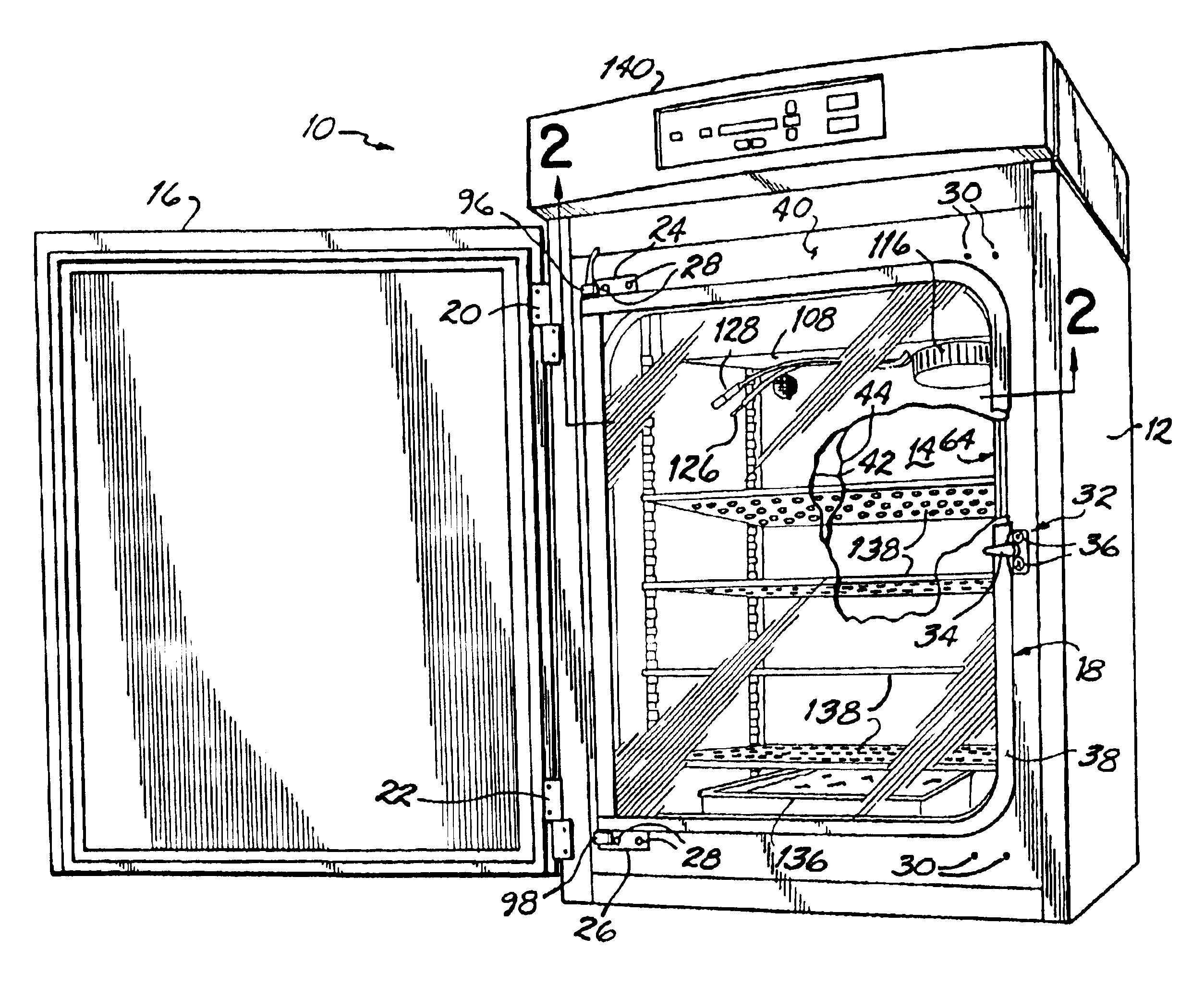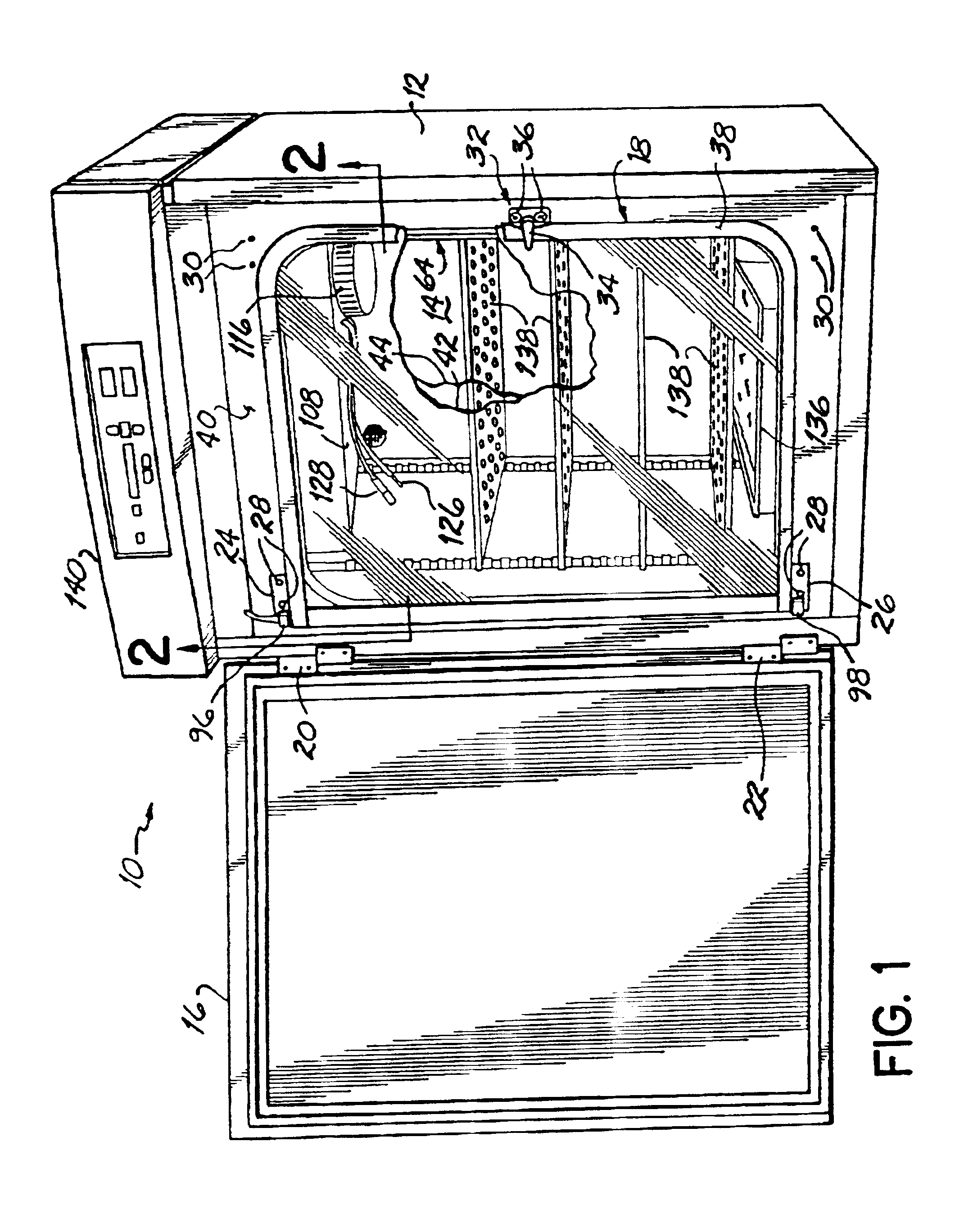Incubator having combined HEPA and VOC filter
- Summary
- Abstract
- Description
- Claims
- Application Information
AI Technical Summary
Benefits of technology
Problems solved by technology
Method used
Image
Examples
Embodiment Construction
FIG. 1 illustrates an incubator 10 constructed in accordance with the present invention and generally including an insulated, and preferably water-jacketed, cabinet 12 with an interior controlled-atmosphere chamber 14. Chamber 14 is accessed through a pair of doors which include an outer insulated door 16 and an inner heated glass door 18. Insulated door 16 is attached to cabinet 12 by a pair of hinges 20, 22 which may be alternatively attached to the left or right side of cabinet 12 depending on which direction it is desired to swing insulated door 16. Likewise, inner glass door 18 includes hinges 24, 26 secured by fasteners 28 to front panel 40 of cabinet 12. In general these fasteners 28 and receiving elements 30 allow fastening of door 18 to front panel 40 in either a left or right swinging manner. Fastener receiving elements 30 are installed permanently on both the left and the right side of front panel 40 and are sealed into the water jacket portion of cabinet 12. Door 18 furt...
PUM
| Property | Measurement | Unit |
|---|---|---|
| Flow rate | aaaaa | aaaaa |
Abstract
Description
Claims
Application Information
 Login to View More
Login to View More - R&D
- Intellectual Property
- Life Sciences
- Materials
- Tech Scout
- Unparalleled Data Quality
- Higher Quality Content
- 60% Fewer Hallucinations
Browse by: Latest US Patents, China's latest patents, Technical Efficacy Thesaurus, Application Domain, Technology Topic, Popular Technical Reports.
© 2025 PatSnap. All rights reserved.Legal|Privacy policy|Modern Slavery Act Transparency Statement|Sitemap|About US| Contact US: help@patsnap.com



